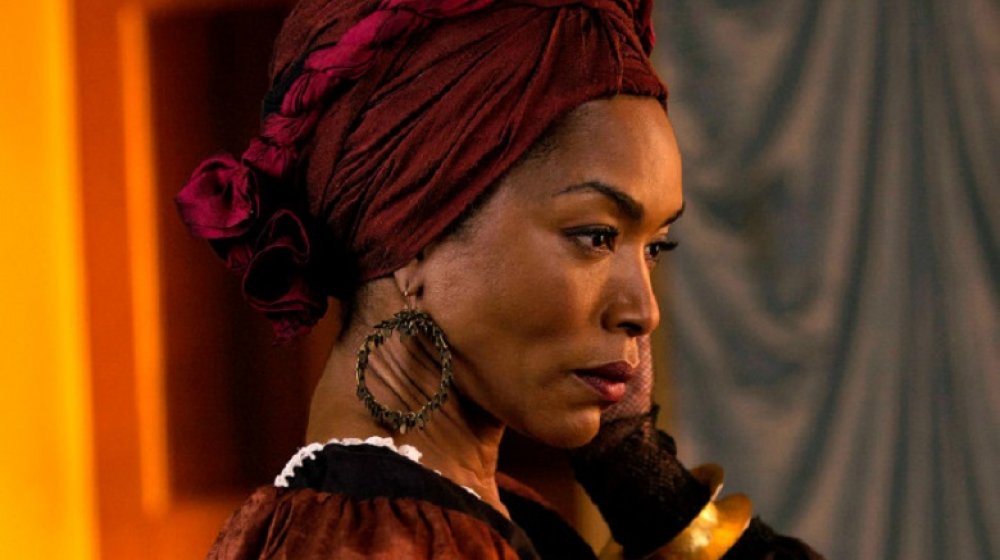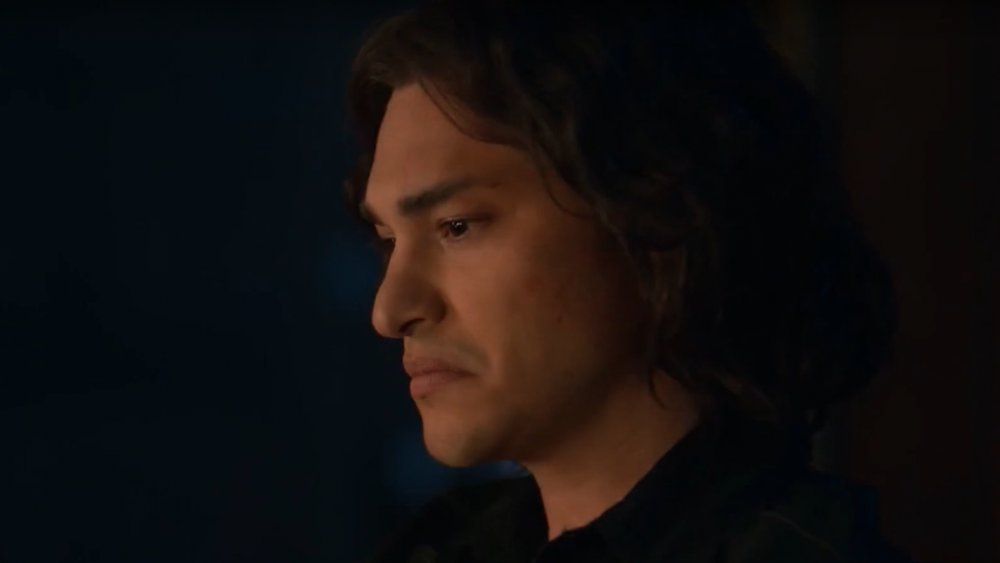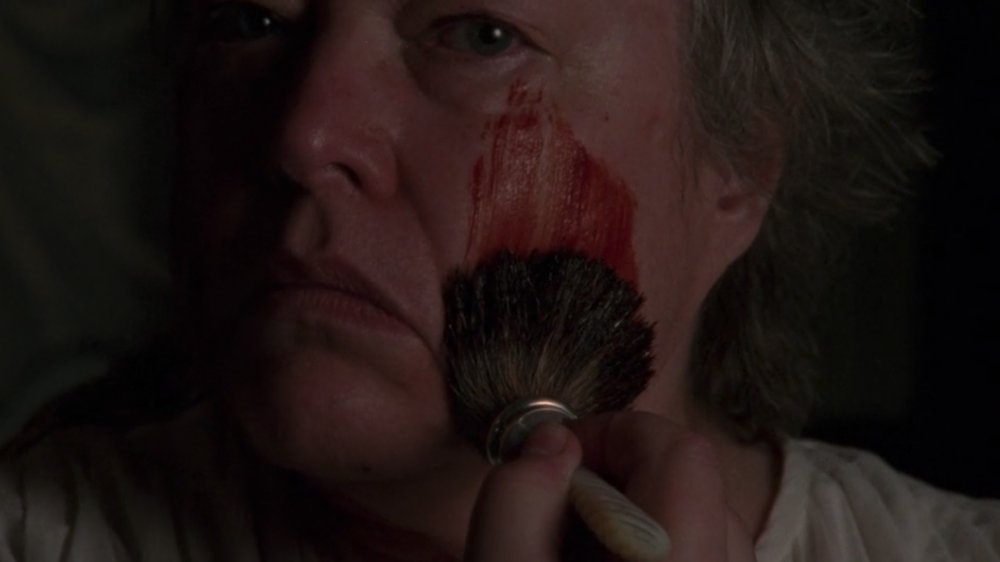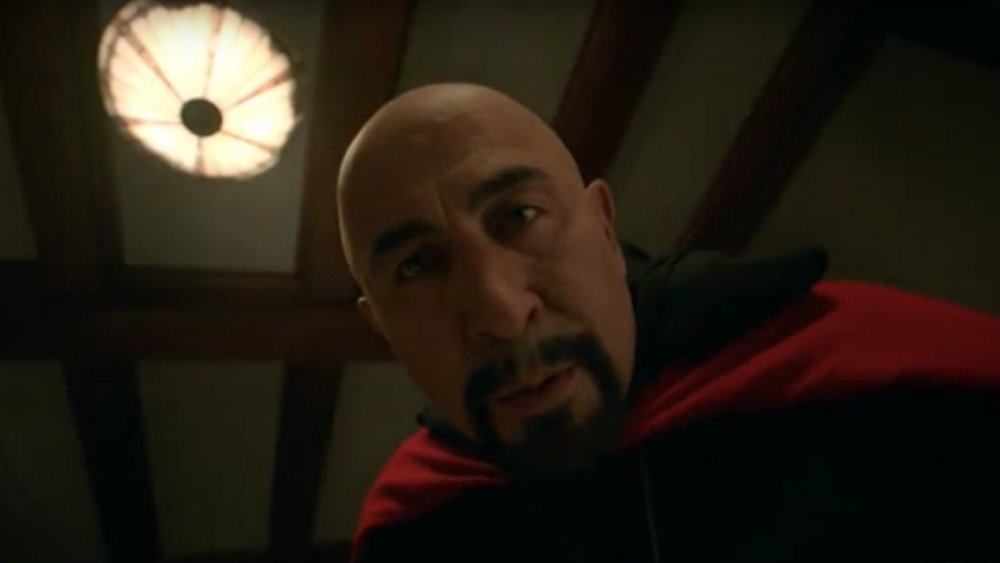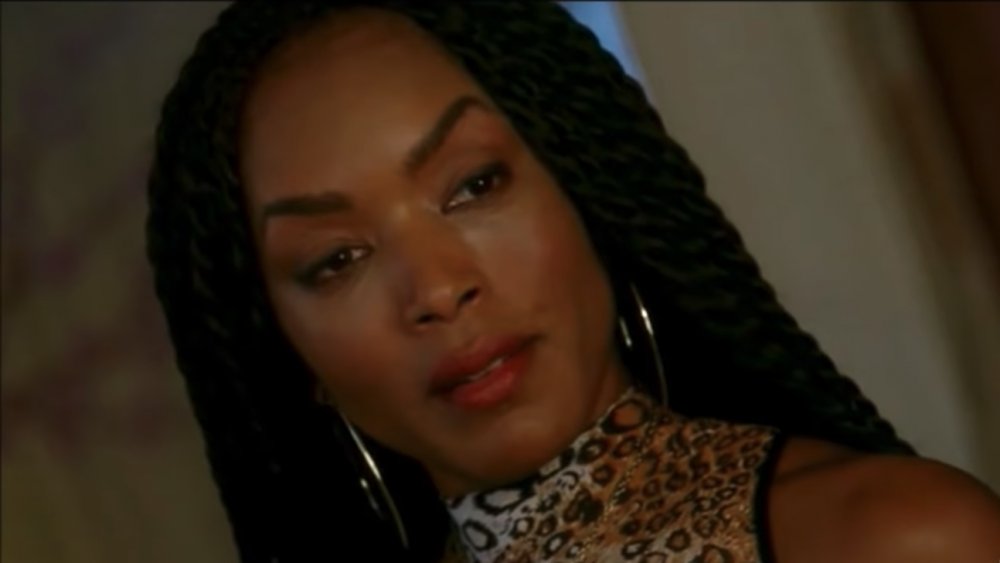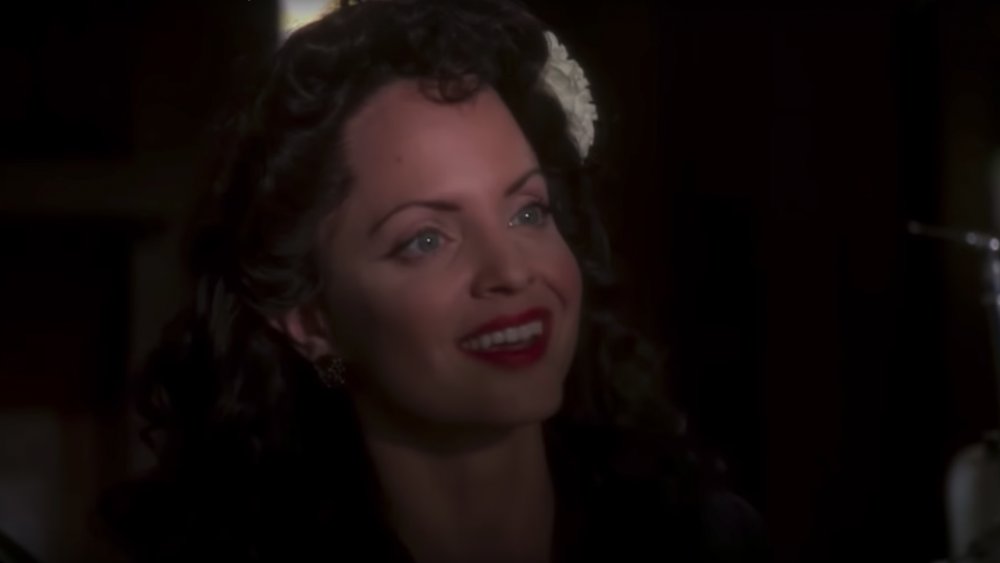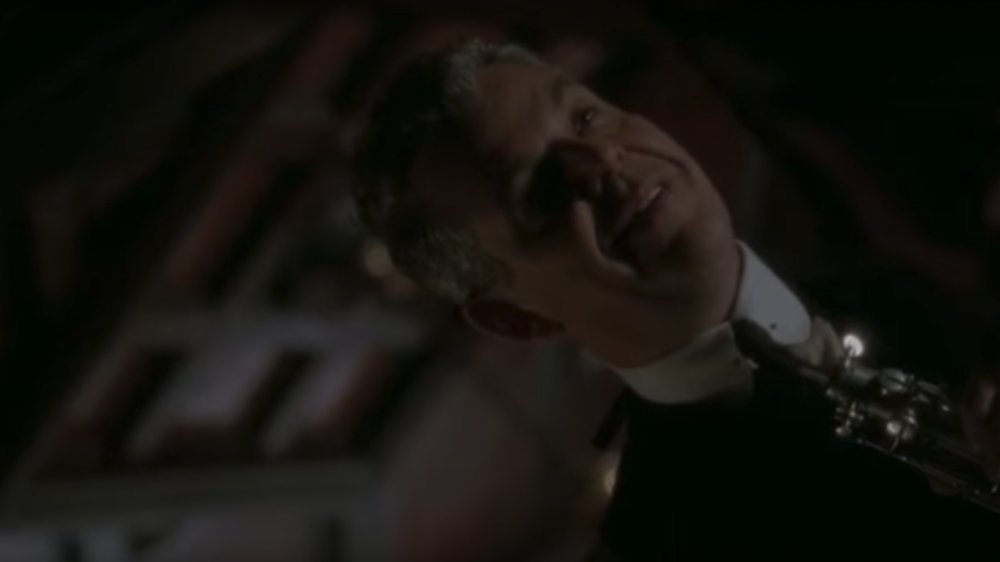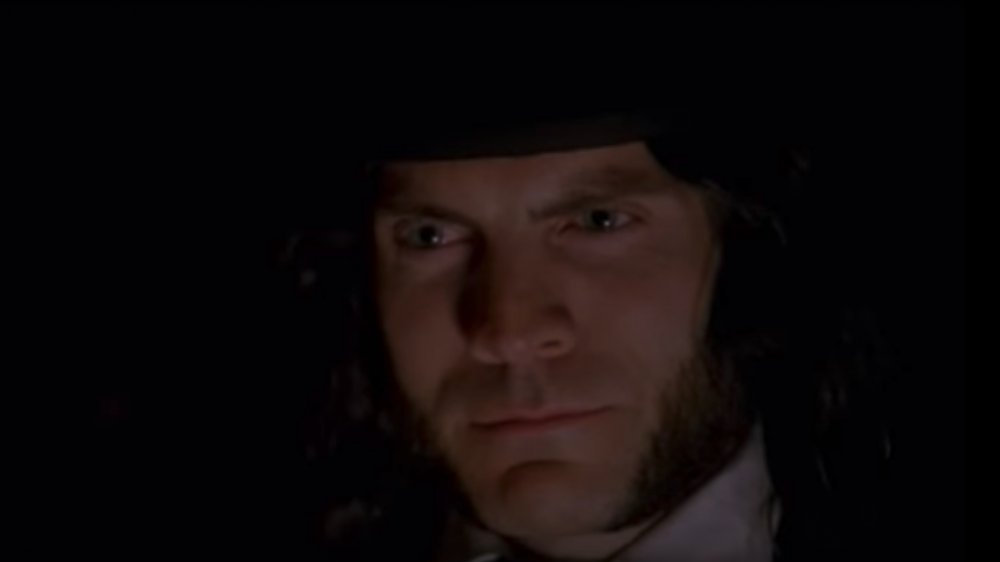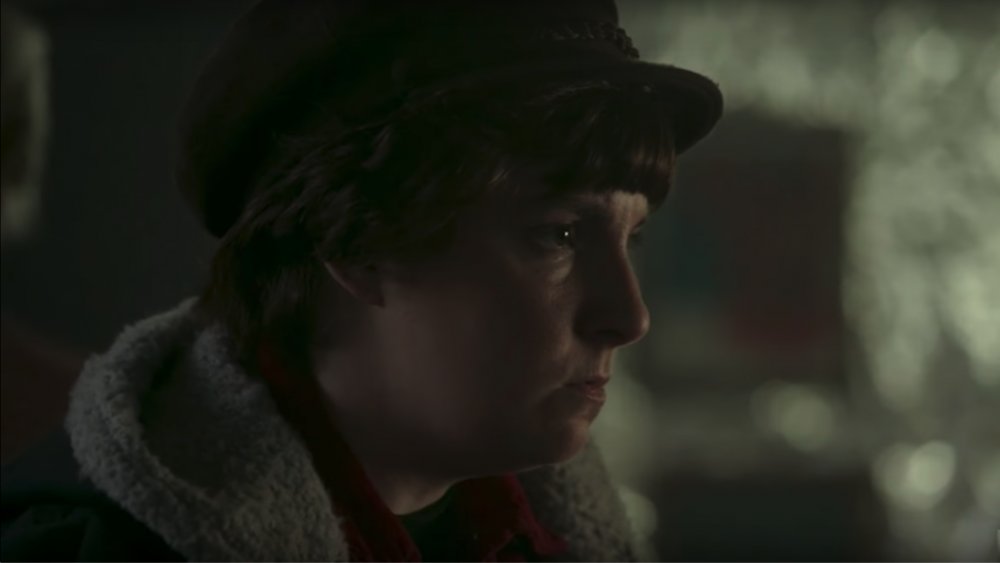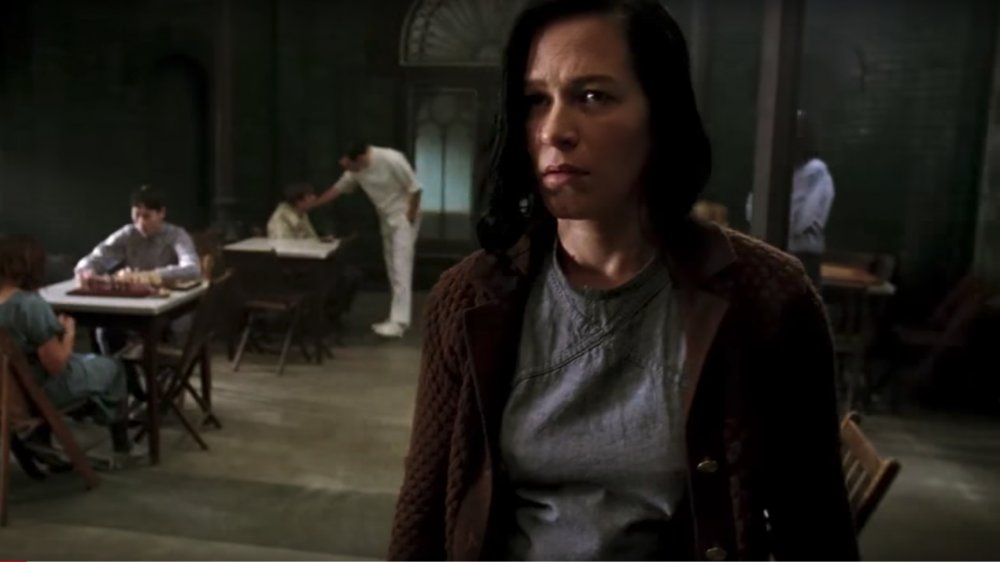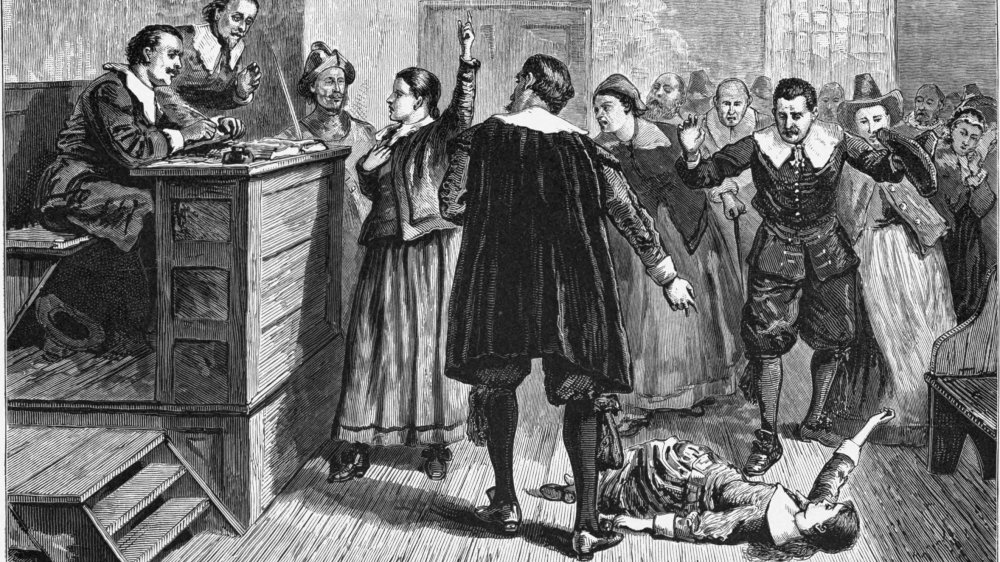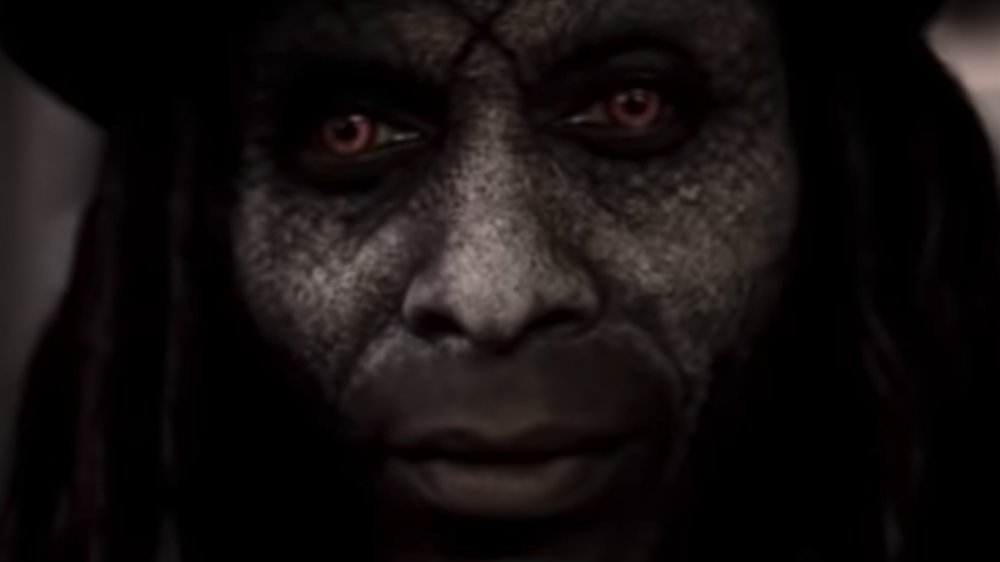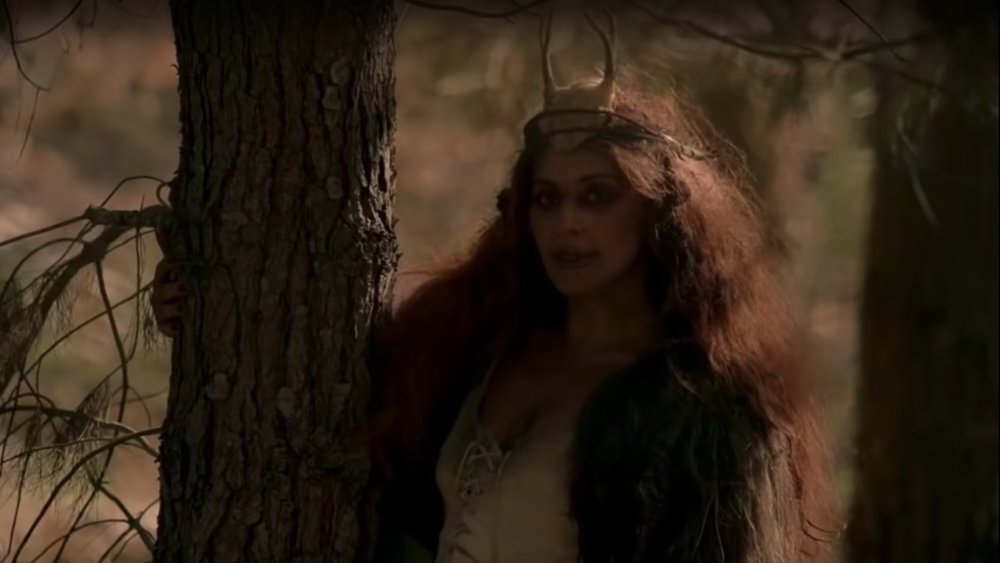Things American Horror Story Gets Wrong About History
FX's Emmy-award winning television series, American Horror Story (AHS), is one of the most popular horror anthology shows in decades. By shifting to telling a story per season instead of per episode, Ryan Murphy and Brad Falchuk managed to revolutionize anthology storytelling, while also including connections and hints to other seasons, keeping long-time viewers invested and guessing, too.
You can't tell tales of quintessentially American horror without getting into the history of the country. In a change from many horror properties that delve into history, American Horror Story isn't shy about including lots of real-life horrors as well as fictional ones as it visits various time periods in United States' history.
Unfortunately, it doesn't always get that history completely accurate, and the show does have a tendency to play fast and loose with the facts, especially when it comes to actual historical figures that crop up in the show's various storylines.
Richard Ramirez never escaped from jail
2019's American Horror Story: 1984 was a retro throwback to slasher films of the 1980s. Inspired by Friday the 13th, Sleepaway Camp, Halloween, and more, the story focused on the fictional Camp Redwood, the site of numerous murders and ghastly goings-on. But to add a little zest to the story, creators added real-life serial killer Richard "The Night Stalker" Ramirez into the mix, where he attacked the camp's counselors and openly worshiped Satan.
Ramirez really did break into homes and murder the occupants, and he really did have a strange obsession with Satan. Even Ramirez's origin story, portrayed in a flashback, is pretty accurate. Ramirez's capture, where he was chased by an angry mob through the streets of Los Angeles after being identified at a convenience store, really happened, too, as amazing as that sounds. Other than the obviously fictional parts about Ramirez killing teens at a summer camp, the show gets his life story surprisingly close to the real thing.
There is one thing that definitely didn't happen with Ramirez, though — he never escaped from prison, as he does in the season's final episodes. Using the power of Satan, Ramirez is able to trick a guard into releasing him, and he begins a journey of revenge from there. The real Richard Ramirez spent the rest of his life in jail, though, according to Elle. He stayed on death row until 2013, when he died of lymphoma.
The real Madame LaLaurie fled from New Orleans
American Horror Story: Coven, the show's third season, was a fan favorite. The storyline involves a group of young witches studying at Miss Robichaux's Academy in New Orleans, where they learn the magic secretly passed down through generations by survivors of the Salem witch trials.
Alongside this are numerous plot threads featuring real-life New Orleans history and actual denizens of the city's past. One of these is Madame Delphine LaLaurie, played by Kathy Bates. A socialite and slave owner, Madame LaLaurie had a dark secret. In her spare time, she tortured and mutilated her slaves for various medical "experiments" in her mansion's attic slave quarters.
That actually happened. LaLaurie was a monster, and was found out by her neighbors when one of her cooks intentionally set fire to the house to expose her crimes, according to Deep South Magazine. In the show, LaLaurie was tricked into taking an immortality potion and buried in a box until the modern day, but the real LaLaurie had a far less dramatic fate — she fled New Orleans before she could be brought to justice. Although where she ended up afterward isn't entirely clear, it's believed that she made her way to Paris and eventually died there.
Anton LaVey didn't actually believe in Satan
American Horror Story's eight season, Apocalypse, aired in 2018 and finally revisited lingering plots from Murder House and Coven, something fans had eagerly awaited. Michael Langdon, a child hinted to be the antichrist and born to the Harmon family in season one, returned, this time was confirmed to be the actual son of Satan, and was opposed by the witches of season three.
Michael's abbreviated upbringing, during which he aged at a very accelerated rate, features a storyline where he is effectively a child in an adult's body and has to be taught what exactly it means to be the antichrist and what his duties are in bringing about the end of the world. In the episode "Return to Murder House," Anton LaVey and members of the Church of Satan show up at the titular house (where Michael is living) and perform a human sacrifice as part of a Black Mass.
Anton LaVey was a real person and founder of the Church of Satan, but in real life, the Church of Satan is a secular group that's focused on earthly matters, not actual devil worshipers. LaVey chose the name for metaphorical purposes, and the Church is considered an atheist organization. And they don't do sacrifices, either. The Church of Satan was upset enough about the show's portrayal to put out a public statement decrying the episode, according to The Blast.
Marie Laveau wasn't an evil voodoo sorceress
Along with the witches of season three's titular coven, American Horror Story also features several voodoo practitioners of New Orleans, a city known for its connection to the religion. The leader is the Voodoo Queen, Marie Laveau. She's a cunning immortal who is ruthless in defending herself and her compatriots from witchcraft, which is presented as a competing magic to voodoo. She'll do anything it takes, and she quickly arises as an antagonist to the witches of Miss Robichaux's Academy.
Marie Laveau was a real person, and she's a legend in the history of New Orleans and voodoo. Practicing her own particular form of magic, Laveau really was known as the Voodoo Queen of New Orleans. She wasn't evil, though. Laveau was reported to be "one of the most wonderful women who ever lived," according to Bustle. Obviously, she also wasn't actually immortal, but this rumor predates AHS. It may have come about because she had a daughter, also named Marie Laveau, who was also a famous voodoo practitioner and whose alleged similar appearance to her mother might have caused people to mistakenly whisper that Laveau was ageless.
Also, in the lore of the show, Madame Delphine LaLaurie and Marie Laveau are bitter, centuries-long enemies. In real life, while LaLaurie and Laveau lived in New Orleans at the same time only blocks away from each other, there is only speculation, not hard evidence, they could have met.
Elizabeth Short wasn't a prostitute
In American Horror Story: Murder House, the house that gives the season its name is a mansion on the outskirts of Los Angeles, and is host to a number of horrific murders, violent residents, and other terrors, including the ghost of Elizabeth Short, better known as The Black Dahlia.
Elizabeth Short did exist, and she was a murder victim found in L.A. in 1947. Short was bisected and cut from the corners of her mouth to her ears, that much is true as well. But, due to the sensational nature of the crime and misinformation from the media and amateur investigators, a great many rumors also emerged about Short, several of which ended up in AHS.
The show implies Short was a bisexual prostitute. While those things were claimed in various newspapers, there has never been any evidence that either was true. The character also wears a dahlia in her hair, but this, too, was a false rumor about how Short received her nickname. In truth, The Black Dahlia was a name made up by the press, a play on the 1946 film The Blue Dahlia, according to the FBI. In addition, the show portrays Short being killed by accident from a nitrous overdose, but in reality, she was killed by blunt force trauma and her death was never treated as anything but a premeditated murder.
The Axeman of New Orleans wasn't a supernatural being
Another, smaller plot line of American Horror Story: Coven was that of the Axeman of New Orleans — a serial killer capable of murder even after his own death by a witch coven. As his name implies, he committed his violent murders with an ax. A fan of jazz, he wrote to the papers saying he would spare the inhabitants of any place with a jazz band playing on March 19, 1919. The people complied and no one died that night.
Those things are true, and the Axeman did terrify New Orleans from 1918 to 1919. The killer was never caught and his identity is unknown. He really did send a letter to the papers requesting jazz to play all night. But he was just a man, and the killings ended after 1919. There are two major theories as to why that is, and they don't involve witches.
The first theory is that the Axeman wasn't just a serial killer, but a Mafia assassin, according to All That's Interesting, since most of the victims were Italian immigrants. Once whatever score was settled, the killings stopped. The second theory is a little more out-there. The Axeman's final victim, Mike Pepitone, had a widow named Esther. Later in 1919, Esther shot and killed a man named Joseph Momfre in Los Angeles, allegedly because she believed he was the killer of Mike Pepitone, according to Starcasm, and there is "some reason to believe" she was right.
Edward Mordrake wasn't a legendary sideshow performer
In a switch from other seasons of American Horror Story, the fourth season, Freak Show, avoided supernatural horrors for more earthly ones. Its threats were nearly all of the human variety, such as ex-sideshow clown Twisty or bratty, entitled monster Dandy Mott.
The exception was Edward Mordrake. Supposedly, Mordrake was a supernatural being who appeared every Halloween to punish sideshow people who performed on that night. He was described as the original "freak" — a man of royal descent with a second, evil face on the back of his head that whispered terrible things at him. The show claims that Mordrake was a real man from history.
The truth is that Mordrake almost certainly never existed, but was merely a legend, according to Snopes, and he definitely wasn't supernatural. That said, it's possible he was inspired by one of two real illnesses. Parasitic twins can sometimes manifest as a smaller head attached to the fully-formed twin's head, but another possibility is a disease called diprosopus, wherein a person or animal can have their facial features duplicated at another spot on their head. This can be seen in Janus cats, for example, which are domestic cats with two faces, but aren't part of a multiple birth. It's entirely possible that a real person with two faces inspired the creation of the Mordrake legend, even if Mordrake himself wasn't real.
Valerie Solanas wasn't a cult leader
Similar to Freak Show, American Horror Story: Cult eschewed supernatural horror for the real-life horrors of cults, brainwashing, and human manipulation. Kai Anderson, a narcissistic and violent reactionary uses the modern threat of extremism to form a pseudo-political movement that is really a thinly-disguised cult wearing creepy clown costumes.
As the story unfolds, there are flashbacks to cult leaders of the recent past. In 1968, a woman named Valerie Solanas attempts to murder artist Andy Warhol and starts a group called SCUM, an acronym for "The Society for Cutting Up Men." Solanas and SCUM then begin to commit domestic terror acts to advance their own extremist brand of feminism, culminating in a plot to commit multiple murders and blame them on a fictional murderer of their own creation called the Zodiac Killer.
In reality Solanas did shoot Andy Warhol, and she did write the SCUM Manifesto, but she never started an actual group. SCUM didn't even stand for anything, despite what people started claiming. While Solanas was mentally unstable, the SCUM Manifesto is typically considered to be hyperbolic and not an actual plan to wipe out men, as noted in Inquiries Journal. And there's zero evidence that the Zodiac killings were committed by multiple perpetrators or as part of an organized conspiracy.
Anne Frank didn't survive the Holocaust
Season two, Asylum, presented the show's first all-new setting, Briarcliff Manor in 1964, a mental institution with numerous staff and inmates, each with their own stories and struggles. Asylum had a large number of plots (something later seasons toned down) including demonic possession, aliens, and many more.
The season also touched on the aftermath of World War II, and especially escaped Nazis, in the form of Briarcliff's doctor, Arthur Arden, who was really a former Nazi doctor named Hans Grüper. Notorious for his inhumane medical experiments, Grüper fled to America and continued his work at Briarhurst until exposed by an adult woman claiming to be famous Jewish diarist Anne Frank.
While "Anne Frank" does correctly identify Arden as a former Nazi, the chances of Anne Frank surviving the Holocaust are basically nonexistent. She is definitively recorded as having died from typhus in Auschwitz, as noted by the Anne Frank House. Her identity on the show is even seriously questioned when a man claiming to be her husband says she's actually Charlotte Brown, a delusional woman who merely believes she's Anne Frank. The show leaves it up in the air whether or not the woman really was Anne Frank, and if she wasn't, how she knew about Arden's Nazi past, but in reality, there's no doubt that Anne Frank tragically perished in captivity.
Tituba didn't practice voodoo in Salem
American Horror Story: Coven features a long-standing feud between witches and practitioners of Voodoo. As Marie Laveau explains to Fiona Goode, voodoo and witchcraft both trace their histories to the Salem witch trials. The first person accused of witchcraft, Tituba, was a slave who practiced a shamanistic magic, an early form of voodoo, passed down through her Arawak heritage. Laveau claims that the white Europeans of Salem learned some of Tituba's magic, then betrayed her, stealing the magic for themselves.
Historically, the first woman accused of witchcraft in Salem was indeed a slave named Tituba. But that's about all that's correct of Laveau's story. Traditional voodoo is far more closely related to the religious beliefs of West Africa than with the Arawak, the indigenous people of the Caribbean, according to Shona's Site. And it's not even clear that Tituba was of Arawak descent. She was black, but her specific ancestry wasn't recorded, so we don't know her actual heritage at all.
What's more, Tituba's accused crimes, which she forcibly confessed to, were all based around European ideas of witchcraft, like riding brooms and having an animal familiar, and not voodoo, according to New England Folklore. Of course, it's very likely she didn't practice any sort of magic at all and committed no real crime, like most of the women accused in Salem.
Papa Legba is not a voodoo gatekeeper to Hell
One of the lesser-seen antagonists of American Horror Story: Coven is Papa Legba, a voodoo loa (a kind of deity) with a top hat, painted face, dark clothes, and a tendency to make unsavory deals with mortals. He makes a particularly nasty one with Marie Laveau, requesting that she sacrifice a baby to him once a year to keep her immortality. He's also portrayed as being a warden of Hell.
Papa Legba exists in voodoo, but the show's depiction is highly inaccurate. His appearance and behavior are derived from a different loa, Baron Samedi. It seems like the show only called him Papa Legba to make him stand out, since Baron Samedi has already appeared in tons of media. Papa Legba is meant to be a go-between from mortals to the loa. Most voodoo rituals involve calling on Papa Legba, a wizened old man with a cane, to carry the practitioners' requests to the loa, according to Lady Geek Girl.
It's also worth noting that Hell is not part of voodoo's mythology. Instead, there is a spirit world, which is a counterpart to the human world, but not a place of punishment or fire and brimstone. In voodoo belief, the dead move onto the spirit realm and live there, where they can still be called on by the living.
Scáthach was not a legendary witch
American Horror Story: Roanoke was one of the biggest departures for the series. Instead of a traditional narrative, Roanoke presents its story of a haunted house in the form of two documentaries. The first, "My Roanoke Nightmare" is in the style of a true haunting TV show, with interviews with the homeowners intercut with dramatic reenactments, and the second, "Return to Roanoke: Three Days in Hell" portrays the homeowners and the actors who played them in a reality show, where both groups are to spend three nights together in the house.
As the plot unfolds, the source of the horrors of the historical Roanoke Colony and the modern haunted house are determined to be caused by a centuries-old witch called Scáthach, an Englishwoman of druidic descent who stowed away on the Roanoke Colony's ship and was to be burned at the stake after the colony experienced misfortune. Scáthach was freed by ancient gods and slaughtered the people of Roanoke, leading to the events of Roanoke and becoming the first Supreme Witch, tying into Coven's storyline.
Turns out, Scáthach is a real mythological entity, but not in American folklore. Instead, she comes from Celtic legends, where she wasn't a witch at all. Scáthach was a warrior woman who trained various figures from Celtic mythology in the ways of combat, and was a noble, venerated fighter, according to Screen Rant.
